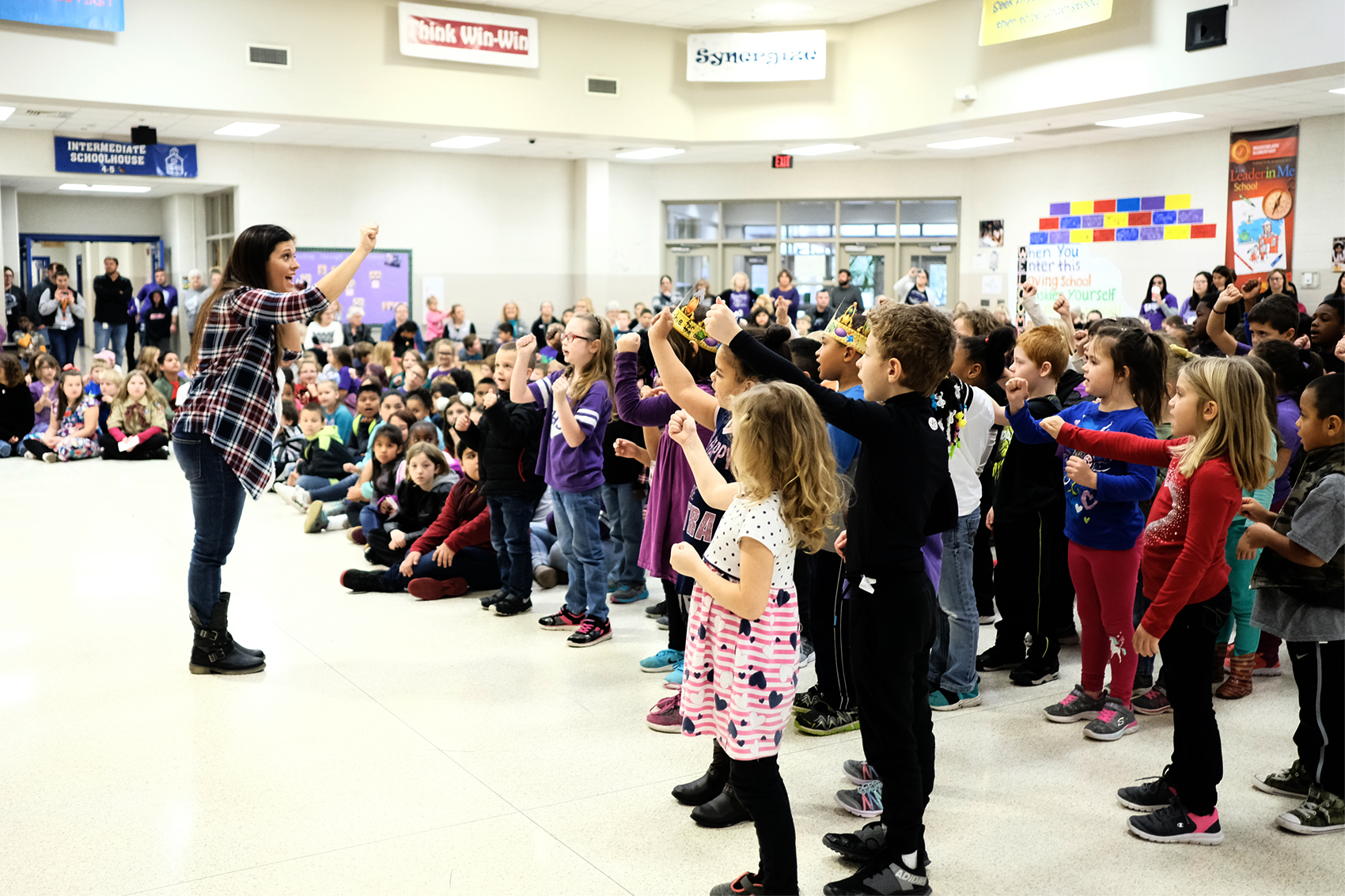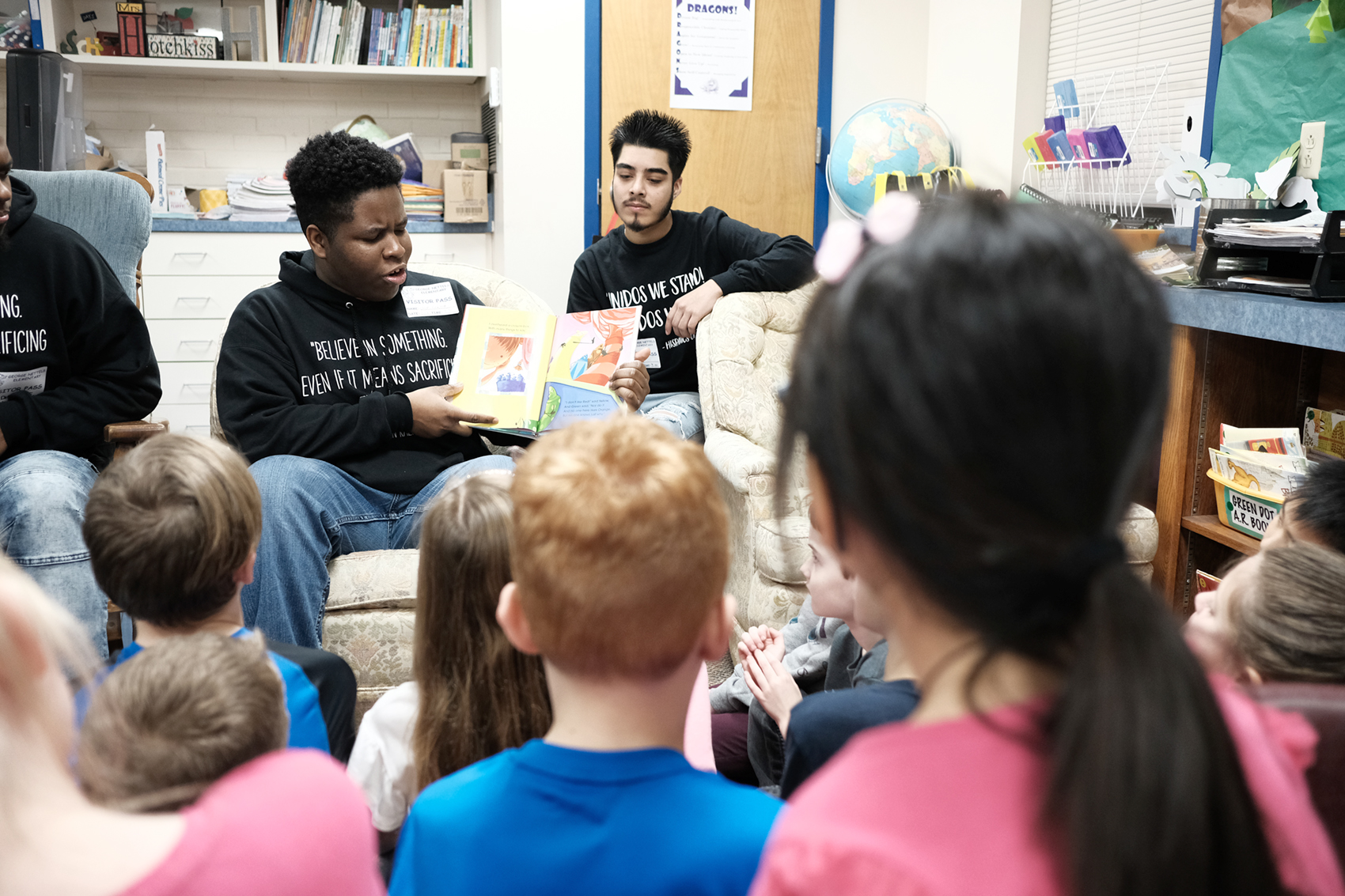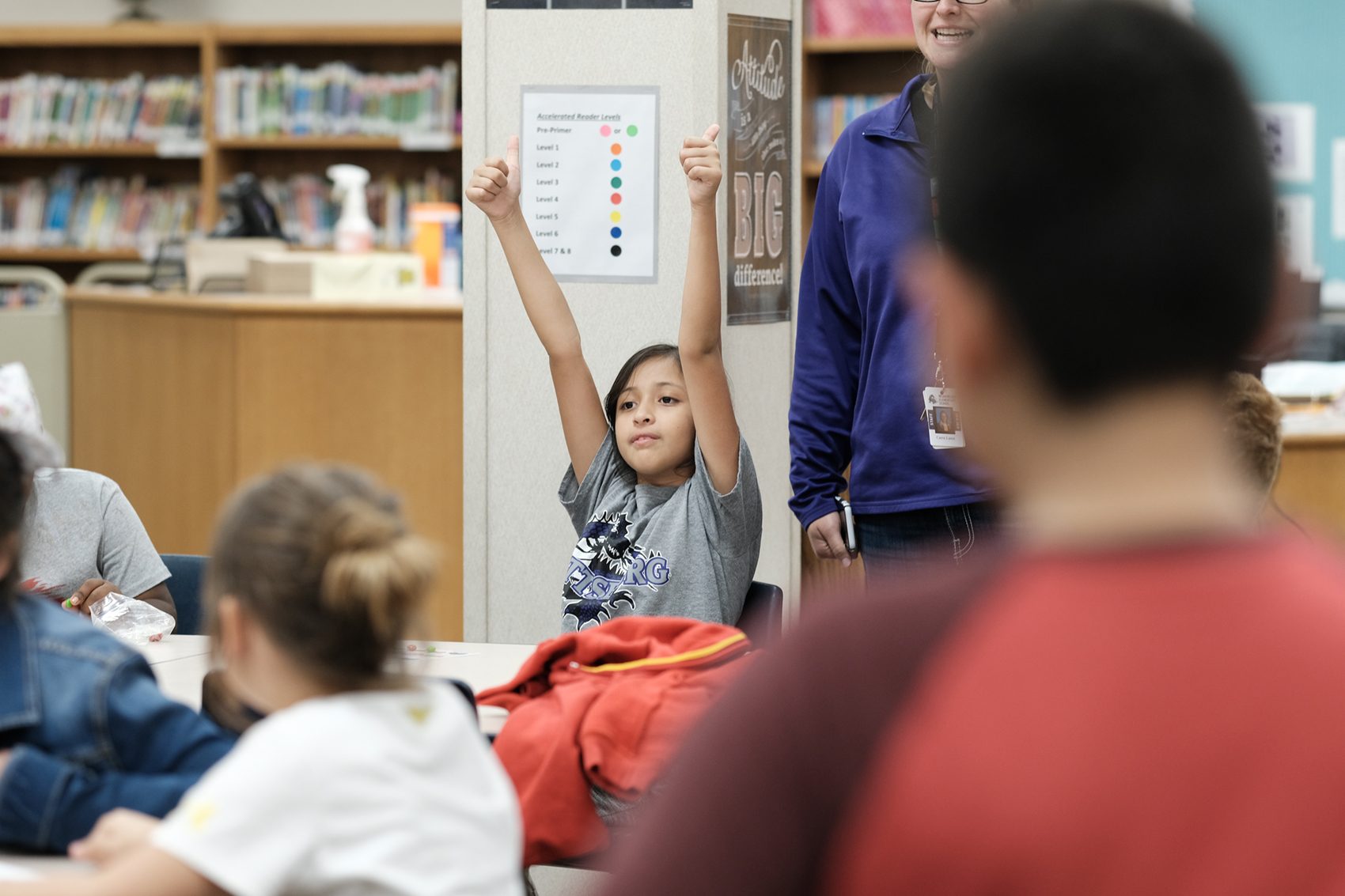Pittsburg schools focus on programs, help to all students in need
Lashawn Taylor, left, and Richard Bell show young men how to tie a tie while giving away food baskets. [Chance Hoener/The Morning Sun]
According to Pittsburg USD 250 superintendent of schools Richard Proffitt, two landmark court decisions changed the face of education — Brown v. Board of Education in 1954 and the Individuals with Disabilities Education Act in 1975.
Proffitt has been in education for nearly three decades at six different school districts, starting in western Kansas and now in southeast Kansas.
The dynamic of education has changed over the years, Proffit said. Districts have worked on focusing on inclusion of all students, no matter their demographic, socioeconomic background and disabilities, including Pittsburg USD 250.
Proffitt said one of the biggest challenges the district faces is the poverty level. Approximately 60 percent of the district’s students qualify for free or reduced lunch.
“Everywhere I’ve been, kids have been included regardless,” Proffitt said. “More lines have been drawn along socioeconomic status than just about anything else.”
Although the requirements for free or reduced lunch have lowered in the past few years, “still being at 60 percent, presents quite a few challenges to really meet a lot of students needs,” Proffitt said.
For many students, this could affect class choices and higher education, he said.
“There are some times kids don’t have a belief or expectation that they can take those kinds of classes,” Proffitt said. “That they can go beyond our walls and go into some sort of post-secondary education. We’re trying to break those barriers down.”
This includes lifting some restrictions.
“We need to have a system that fits the needs of our kids instead of having a bunch of kids that fit into our system,” Proffitt said. “There’s a huge difference.”
Special education
According to the United States Department of Education, IDEA “guaranteed access to a free, appropriate, public education (FAPE) in the least restrictive environment to every child with a disability. Subsequent amendments, as reflected in the IDEA, have led to an increased emphasis on access to the general education curriculum, the provision of services for young children from birth to 5, transition planning and accountability for the achievement of students with disabilities.”
Prior to the passage, students with disabilities were separated — often going to separate schools — without the opportunities other students had, Proffitt said.
“Students with exceptionalities then started to have to have Individualized Education Programs started coming in,” he said.
According to the U.S. Department of Education, “The IEP creates an opportunity for teachers, parents, school administrators, related services personnel, and students (when appropriate) to work together to improve educational results for children with disabilities. The IEP is the cornerstone of a quality education for each child with a disability.”
More students were then moved into the school buildings, many still in self-contained classrooms.
“Then we have what is called ‘inclusions’ where we get out of individual rooms and into the mainstream,” Proffitt said. “It has even gone so far as team teaching in our district between our special education teachers and regular education teacher in the same classroom with no delinations between any of the students.”
In 2017, Pittsburg residents voted on a $31 million bond project for the Pittsburg school district. The project included renovations, which included changes to every school. An auto-shop room was transformed into a room for students with autism. The room has a kitchen, washer and dryer set, quiet rooms, soft flooring and sensory areas. The shop doors were removed and replaced with double doors designed for easy access for students in wheelchairs.

Race in schools
According to the Civil Rights Data Collection in its 2015 report, the latest available, Pittsburg has 3,052 students enrolled, with 0.4 percent American Indian/Alaskan Native students, 4.2 percent black or African-American, 1.3 percent Native Hawaiian/Other Pacific Islander, 70.6 percent white, 1.1 percent Asian, 14.8 percent Hispanic, and 7.6 percent two or more races.
The report said that out of 257 students who received in-school suspensions: 8.9 percent were black, 1.6 percent were Native Hawaiian/Other Pacific Islander, 58.8 percent were white, 15.2 percent were Hispanic and 15.6 percent were two or more race.
The report also says that out of 227 students who received out-of-school suspensions: 12.3 percent were black, 63.9 percent were white, 6.6 percent were Hispanic and 17.2 percent two or more races. Out of 12 expulsions, 16.7 percent of the students were black, 33.3 percent were white, 33.3 percent Hispanic and 16.7 percent two or more races. Lastly, out of the 25 students who were referred to law enforcement, 24 percent were black, 60 percent were white and 16 percent were Hispanic.
The teachers
Just about every teacher does something on a daily basis to include students, it’s just that there’s no spotlight on it, Proffitt said.
Through grants, many teachers in the district go through lengths to learn more about their students. Westside Elementary first-grade teacher Rachel Southard and English as a Second Language teacher Michelle Broxterman spent their summer vacation last year at the Marshall Islands to help them better understand their Marshallese students.
The teachers tried to follow the Marshallese cultural norms.
“We were completely immersed in their culture,” Broxterman said when she came back from the trip.
They were given some tutoring on basic phrases in Marshallese, which put the teachers in a similar situation as their English as a Second Language learners.
“This really put us in the shoes of the English language learners,” Broxterman said. “It is very similar to our students’ experience.”
Proffitt said the district encourages teachers to become ESOL-endorsed.
Pittsburg Community Middle School teachers Angela Lewis and Lynette Wescott took a tour back in time through the Belfer National Conference for Education and the Freedom Foundations at Valley Forge. They also participated in the Korean War Digital History Project.
“It’s all about being a lifelong learner and modeling new learning for your students,” said Wescott, sixth-grade social studies teacher. “Growing up in southeast Kansas and then living here my entire life, your lens and experiences can be small.
“Doing these grants have allowed us to expand these lenses through experience and knowledge.”

Technology
Technology has changed a lot of things, Proffitt said.
He said when talking about technology, it’s not just about students being able to use computers.
“It has given us the ability to put a lot more information at the fingertips of every one of our students,” Proffitt said. “When you think about how technology changes the game of education for those who have limited English proficiency, we now have programs that can help those kids out and could help the teachers out, where nearly 30 years ago when I started the only computer that was in my classroom was mine and the only thing that was on it was word processing.”
Teachers use tablets, laptops and a variety of software to bring information to all. Tablets are also being used for special education to help students communicate.
Westside fifth-graders taking the reins in instructing future teachers on how to make videos about the “Idiom of the Week” at PSU is an example of how both technology, ESOL endorsement and the partnership with the university come together.
The fifth-graders — for whom English is their second language — visited PSU to teach students in the Methods and Materials for English Language Learners class, taught by Professor Tatiana Sildus.
The students used iMovie apps on iPads to create the videos on which they also add sound and special effects — as well as starring teachers and staff from the school.
“Having teachers in the videos is exciting to them,” Broxterman said. “The teachers and staff help them pay attention to the videos, it is exciting for them to see someone they know in the videos.”
Despite the complexity of idioms the students managed to create videos that were not only informational but engaging with their audience. At the end of each video, the students encourage reflexivity by asking the audience about instances they used the idiom of the week.
“When you look at all of our programs, like ESOL, that’s about equality — equal opportunities to education,” Proffitt said. “There are lots of things that have happened since 1954 that have been infused in educational programing and in every school in the state of Kansas, it is a part of who they are.”
